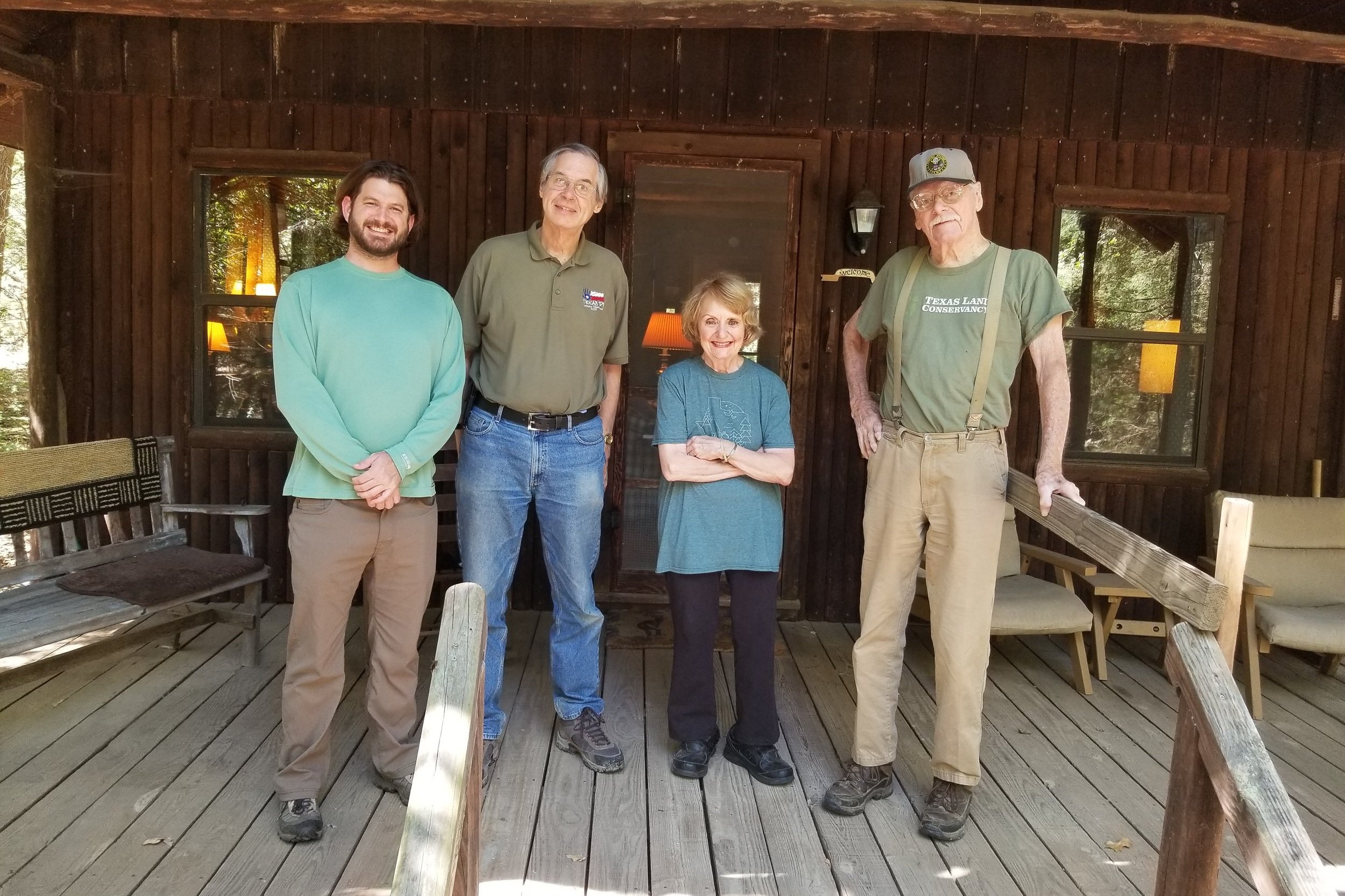Palmer-Jewert Preserve: Protecting Nature As It Was, and How It Will Be
Taking photos under a grand bur oak tree during an annual monitoring visit to Palmer-Jewert Preserve in Kaufman County. // Amber Arseneaux
INTERVIEW WITH RUSS JEWERT
Russ Jewert says he protected his land “to protect it forever.” He and his wife Lori Palmer bought Palmer-Jewert Preserve in 1979, but Russ is no stranger to farm life—he grew up on a dairy farm in western NY. As a kid, Russ would escape to the woods on Sunday afternoons, their only time off, and hike the land. Purchasing this property felt like a return to the open spaces of his childhood.
He remembers telling Ned Fritz about the recent purchase. “He said ‘You should give it to us’.’ Russ laughs. “I said ‘Ned, I just bought it, I can’t give it away!’” But when Ned and Genie came to visit the property and walked the land, Ned convinced Russ that protecting it with a conservation easement was the right move.
Russ admits that preserving the property has afforded benefits for both the present and future. “You’d be surprised at how many trees have grown since 1979,” he says. Wildlife have found new homes in the woods—Russ and Lori regularly spot deer, and he’s even spotted a snake or two. “We have all kinds of small wildlife.” And bigger mammals, too. “Once I was driving around in the riding mower, to keep a trail open. Up jump two coyotes!"
In the end, protecting their dream property with TLC is not just about preserving things as they are, but allowing the land to evolve. A huge cottonwood tree stands on the property, so big Russ can only get his arms halfway around it. Russ ponders, “How long has it been here? Before I was born!” The truth is, the tree is changing along with the land, losing some of its branches in its old age. Russ says these changes are as much worth protecting as the elements that feel integral to the way things were. “It’s nature as it was, and as it will be,” he says. “And we want to protect it.”
INTERVIEW WITH LORI PALMER
For Lori Palmer, protecting the land is all about the relationship between human and nature. Lori says, “The conservancy became the vehicle so we could save this land in perpetuity. There were practical reasons, but ultimately, I believe, it’s all about the relationship to the land. How do you form that relationship so it’s a positive—not negative—impact?”
Lori points out the power of narrative in shaping that relationship and in involving the wider community. It’s not just about landowners, but also about growing the population of people who care. It’s a way to make a difference long after you’re gone, she says.
The new narrative is a beautiful alternative to the story we’ve always been told—that value isn’t purely tied to economic benefit, but to social and cultural development. It’s about seeing connections between people and the land, and about the power to nurture the land.
“I grew up in the north country,” says Lori, “and our pond reminds me of that land of lakes. Our water nurtures the land around it, and makes it possible for wildlife to thrive here.” Even in one lifetime, she says, you can witness how species multiply and diversify, but it’s really about fostering wild spaces for the long term. “I’m in love with our wildlife,” she says. “I’m here to protect them and make sure they’re safe and can thrive.” It’s all about that relationship to the land, and about sharing the message that it’s possible for both landowners and nature lovers to ensure it’s a nurturing one.
TLC Outreach Coordinator Sean Bibby and Board Member Michael Jung visit with landowners Lori Palmer and Russ Jewert. // Amber Arseneaux
Celebrating 40 Years of Conservation
We have been collecting stories and photos from people that have made this organization what it is today, highlighting all the hard work, special moments, and conservation successes we have had over the last four decades. We have been sharing these throughout the year here: https://www.texaslandconservancy.org/40-years-of-conservation
As we move forward to the next 40 years, we hope you will continue to support this important work and help to create a future where being in nature won’t be a thing of the past.
Join or renew your TLC membership today—$40 for 40 years!


